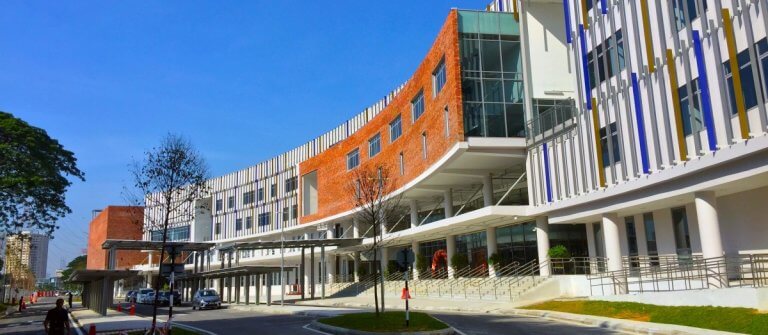
The International School of Kuala Lumpur, one of the earliest providers of private education in Malaysia, yesterday launched its new Ampang Hilir Campus at a prime location close to the city’s commercial centre.
The flagship campus, which costs RM365 million (around US$89 million) is the result of 15 years of planning to realise a physical facility that reflects the school’s strategies around teaching and learning.
Speaking at the launch, Head of School Dr Norma Hudson said: “Knowing that everyone learns differently, our engaging classrooms open into wonderful Commons areas which have a variety of seating options to support collaboration and group learning, or for reflection and private study.
“We believe, too, that learning happens outside of the classroom – and to that end, we have built our campus with superb facilities for the arts and athletics that will inspire innovation,” she added.

ISKL’s elementary school students benefit from interactive lessons in unique “makerspaces,” constructive learning spaces where students can put thinking into action and experience real-world problem-solving. Source: ISKL
ISKL is a pioneer of international education in Malaysia. Established in 1965, the school started with just 48 students at its Istana on Jalan Maxwell grounds, with its Parent-Teacher Association formed only six years later. Today, the co-ed, not-for-profit institutions counts more than 1,700 students representing 67 nationalities, 24,000 alumni and an active PTA as part of its community.
Its new location merges the school’s three divisions: elementary school, middle school and high school, which were previously split between two locations in Jalan Kerja Ayer Lama and Melawati, where they were based for more than 40 and 25 years respectively.
It’s a design that “fosters engagement” through the many learning spaces that allow students and faculty to connect, according to Hudson.
Not to be outdone, the percussions team stages a show at the outdoor performance/common area #ISKLProud pic.twitter.com/edEslvc5SB
— Lee Lian Kong (@leelian_kong) February 21, 2019
The “real heart” of the school is its central open plaza, said Stefan Jakobek, Senior Architect of HOK’ London Studio which designed the campus in collaboration with local architecture firm Veritas Design.
“Public elements are at the centere of the campus, with the auditorium, recital hall, gallery, studio theatre and elementary school theatre grouped around a central open plaza.”
This is “a place where ISKL can come together as one and also reach out to the broader Kuala Lumpur community.”
More natural light, less energy waste
Sustainability is a key theme at the new campus. Natural light streams into loft-style art studios, waste water from sinks double as water to flush toilets, administrators ban plastic bottle use and recycle bins dot strategically across its grounds. A rooftop garden is in the works to teach students about where their foods are sourced.
Eco-campus feels. Reduced use of air-conditioning, electricity, reuse of waste water, recycling bins everywhere 🌳♻️☀️ pic.twitter.com/Xxdcrijo2c
— Lee Lian Kong (@leelian_kong) February 21, 2019
Two aspects of traditional Malaysian architecture – screens and shelter – keep temperatures at a comfortable level, according to Quinton Pop, a design professional based in HOK’s London Studio
“Existing mature plantings and a screened facade shield the eastern elevation, with major openings limited to the northern and southern ends. An open undercroft beneath the middle and high schools created sheltered spaces for socialising and dining. Naturally ventilated, covered walkways lead to the centre of each teaching wing,” Pop explained.

Relying less on artificial light. Source: ISKL
The new buildings aim to use 60 percent less energy than the average school in similar tropical climates through strategic placement of teaching blocks and reduced artificial lighting loads.
ISKL, which was the first school in the country to win the World Wildlife Fund’s (WWF) Eco-Schools Green Flag awards, now aims to be the first to achieve Malaysia’s Green Building Index Platinum rating for sustainable design.
Liked this? Then you’ll love…
Why it’s essential for education systems to engage with eco trends







